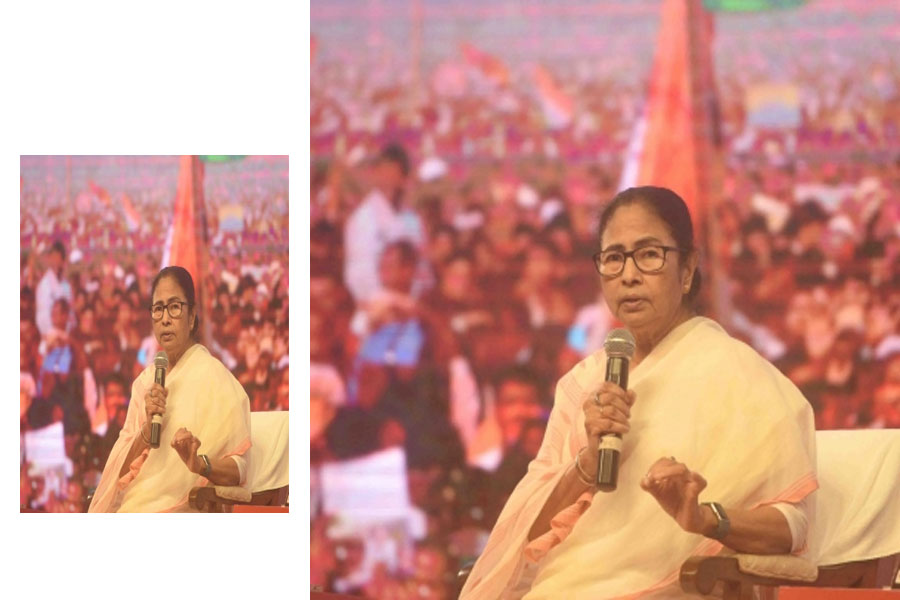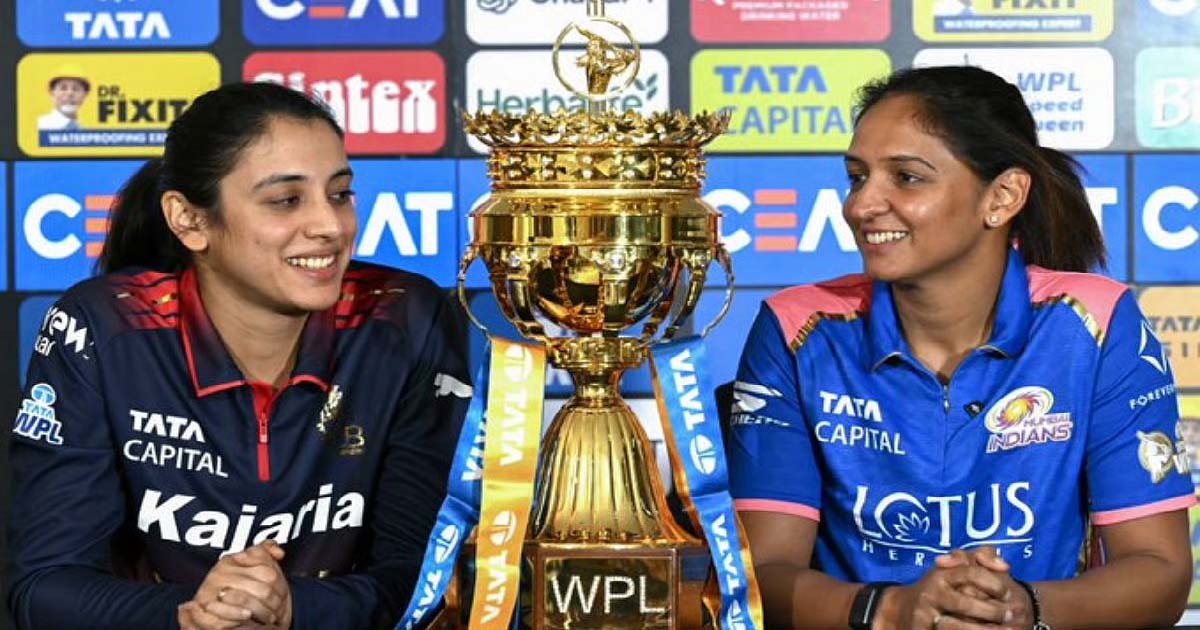National News
2024 LS polls will not be for selection but for rejection: Mamata

The 2024 Lok Sabha polls will not be an election to select a new government at the Centre but to reject the BJP, West Bengal Chief Minister and All India Trinamool Congress president Mamata Banerjee said on Monday.
Speaking at a conclave here, the Chief Minister referred to the recent trend of “bulldozer politics,” and said that the people of India will pay back the BJP in the same coin by bulldozing them out of power.
“The misuse of power by the BJP is bulldozing people and democracy. But in 2024, the people of India will bulldoze them out of power. The 2024 Lok Sabha polls will not be between BJP and the opposition, rather it will be BJP versus people of India. That is why I am saying that those polls will not be the election for selection but election for rejection of BJP,” she said.
She also took a jibe at the BJP over the latter’s frequent attacks against her for encouraging dynasty politics by promoting her nephew and Trinamool Congress’ national general secretary, Abhishek Banerjee. “Why is Abhishek targeted? Did not Sheikh Hasina take over the baton from her father Sheikh Mujibur Rahman? Haven’t people of Uttar Pradesh accepted Akhilesh Yadav after his father Mulayam Singh Yadav?” she questioned.
Banerjee alleged that it was something more than financial considerations that the BJP offered to the rebel Shiv Sena MLAs used for toppling the Uddhav Thackeray-led Maharashtra government. “I will not spell out more details. It can be ‘M’ and it can be ‘W’. Now it is for all to understand. I have all the information but I will not say anything more. At times silence speaks more. Everything will be revealed at some point of time or the other,” she said.
She denied that there was violence in West Bengal after the 2021 assembly polls. “This is all propaganda by the BJP and its confidant media groups. Of the 21 people killed in violence, 16 of them were Trinamool Congress activists. Four of them were killed in BSF firing. Now all these have been included in the post-poll violence. The BJP’s national president J.P. Nadda is responsible for spreading such lies.”
Reacting to her allegations, BJP’s spokesman in West Bengal Shamik Bhattacharya said that the chief minister is actually scared of the growing popularity of the BJP throughout the country. “That is why she says such things. The 2024 Lok Sabha polls will prove that the public support is with the BJP on a much larger scale,” he said.
National News
Navi Mumbai Police Impose Traffic Restrictions Near D Y Patil Stadium During WPL 2026

Navi Mumbai: Navi Mumbai police will impose traffic restrictions on the service road near Dr. D. Y. Patil Stadium in Nerul from January 9 to January 17, 2026, to ensure security and smooth movement during the BCCI Women’s Premier League (WPL) T20 cricket matches.
According to the traffic control notification issued by the Turbhe Traffic Division, all types of vehicles will be barred from plying and parking on the service road between Bhimashankar Society and the L.P. Rickshaw Stand from 7 am to 11 pm on match days, as the route has been earmarked for the movement of players and dignitaries.
Deputy Commissioner of Police (Traffic) Tirupati Kakade said the restrictions are being enforced under provisions of the Motor Vehicles Act to prevent congestion and maintain law and order in the stadium vicinity during the matches.
Commuters have been advised to use the Sion–Panvel Highway, specifically the Uran Phata to L.P. Bridge stretch, as an alternative route to reach their destinations.
The restrictions will not apply to vehicles carrying essential commodities, police vehicles, fire brigade units, ambulances, government vehicles, other emergency services, and vehicles holding official passes issued by the WPL/IPL management.
Mumbai Press Exclusive News
Providing basic amenities to Mumbai is our priority, Samajwadi Party’s election manifesto released, Abu Asim Azmi claims to solve urban problems

Mumbai: The Samajwadi Party released its election manifesto for the Mumbai Municipal Corporation (BMC) elections at a press conference today. The party’s Maharashtra president Abu Asim Azmi presented this manifesto keeping in mind the basic problems of the people of Mumbai. Abu Asim Azmi has also promised free water supply along with basic amenities in the election manifesto. It has been promised to provide 700 liters of clean and free drinking water to every family in Mumbai daily. To raise the standard of education, it has been decided to improve the quality of municipal schools and provide scholarships and free facilities to needy students for higher education. It has also been declared necessary to arrange modern medical facilities, neighborhood clinics and free medicines in every ward of Mumbai in the medical department and health department. In addition, efforts have been made for equal employment opportunities. Creating new employment opportunities for the youth and making special projects to eliminate unemployment are also part of the election manifesto. Providing better facilities for the residents of slums, pucca houses and pothole-free roads in the city, bringing transparency in the functioning of BMC and eliminating corruption are also the main components of the election manifesto. Addressing the press conference, Abu Asim Azmi said that the Samajwadi Party is committed to the development of Mumbai and to providing its people with their fundamental rights. Our aim is not just to make promises but to make Mumbai a better and prosperous city.
National News
BMC Elections 2026: Mumbai Candidates Declare Massive Surge In Assets, Multi-Crore Wealth Revealed In Affidavits

Mumbai, Jan 08: Details of assets, profession and criminal records of selected candidates contesting the upcoming civic elections in Mumbai, as declared in their affidavits, are as follows:
Shaila Dilip Lande – Shiv Sena (Shinde), Ward 163 (Saki Naka)
Profession: Business
Total movable and immovable assets as of 2025: ₹8,18,76,134
Total movable and immovable assets as of 2017: ₹14,27,651
Criminal cases: 0
Found guilty: 0
Kamalakar Naik – Independent, Ward 169 (Kurla Nehru Nagar)
Profession: Business
Total movable and immovable assets as of 2025: ₹11,83,36,519
Total movable and immovable assets as of 2017: ₹1,92,76,226
Criminal cases: 2
Found guilty: 0
Dhanajay Pisal – Nationalist Congress Party (Ajit Pawar), Ward 111 (Kanjur Village)
Profession: Service
Total movable and immovable assets as of 2025: ₹21,82,57,202
Total movable and immovable assets as of 2019: ₹8,55,21,925
Criminal cases: 0
Found guilty: 0
Sonam Manoj Jamsutkar – Shiv Sena (UBT), Ward 210 (Mumbai Central)
Profession: Business
Total movable and immovable assets as of 2025: ₹14,38,84,259
Total movable and immovable assets as of 2017: ₹7,08,67,928
Criminal cases: 0
Found guilty: 0
Geeta Gawli – Akhil Bhartiya Sena, Ward 212 (Mahalaxmi–Umar Park)
Profession: Business
Total movable and immovable assets as of 2025: ₹7,26,92,393
Total movable and immovable assets as of 2017: ₹3,45,32,902
Criminal cases: 0
Found guilty: 0
Sana Haji Halim Khan – Shiv Sena (UBT), Ward 96 (Bandra East)
Profession: Not mentioned
Total movable and immovable assets as of 2025: ₹9,46,03,435
Total movable and immovable assets as of 2017: Not contested
Criminal cases: 0
Found guilty: 0
Nehal Shah – Independent, Ward 177 (Matunga)
Profession: Business
Total movable and immovable assets as of 2025: ₹7,04,11,095
Total movable and immovable assets as of 2017: ₹1,69,77,255
Criminal cases: 0
Found guilty: 0
Rajul Sameer Desai – BJP, Ward 56 (Goregaon)
Profession: Business
Total movable and immovable assets as of 2025: ₹24,28,81,925
Total movable and immovable assets as of 2017: ₹1,79,69,000
Criminal cases: 0
Found guilty: 0
Prabhakar Shinde – BJP, Ward 106 (Mulund)
Profession: Business
Total movable and immovable assets as of 2025: ₹17,63,01,181
Total movable and immovable assets as of 2017: ₹57,46,971
Criminal cases: 0
Found guilty: 0
Neil Somaiya – BJP, Ward 107 (Mulund)
Profession: Business
Total movable and immovable assets as of 2025: ₹9,89,21,872
Total movable and immovable assets as of 2017: ₹1,99,37,809
Criminal cases: 0
Found guilty: 0
-

 Crime3 years ago
Crime3 years agoClass 10 student jumps to death in Jaipur
-

 Maharashtra1 year ago
Maharashtra1 year agoMumbai Local Train Update: Central Railway’s New Timetable Comes Into Effect; Check Full List Of Revised Timings & Stations
-

 Maharashtra1 year ago
Maharashtra1 year agoMumbai To Go Toll-Free Tonight! Maharashtra Govt Announces Complete Toll Waiver For Light Motor Vehicles At All 5 Entry Points Of City
-

 Maharashtra1 year ago
Maharashtra1 year agoFalse photo of Imtiaz Jaleel’s rally, exposing the fooling conspiracy
-

 National News1 year ago
National News1 year agoMinistry of Railways rolls out Special Drive 4.0 with focus on digitisation, cleanliness, inclusiveness and grievance redressal
-

 Maharashtra1 year ago
Maharashtra1 year agoMaharashtra Elections 2024: Mumbai Metro & BEST Services Extended Till Midnight On Voting Day
-

 National News1 year ago
National News1 year agoJ&K: 4 Jawans Killed, 28 Injured After Bus Carrying BSF Personnel For Poll Duty Falls Into Gorge In Budgam; Terrifying Visuals Surface
-

 Crime1 year ago
Crime1 year agoBaba Siddique Murder: Mumbai Police Unable To Get Lawrence Bishnoi Custody Due To Home Ministry Order, Says Report






















